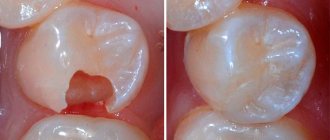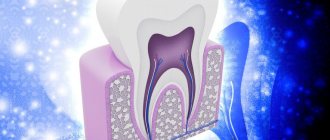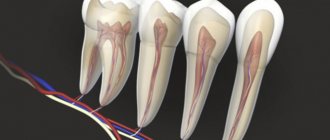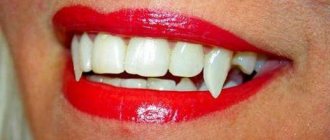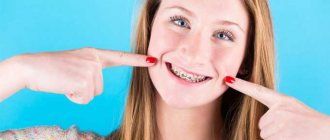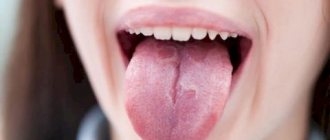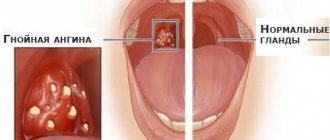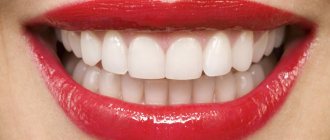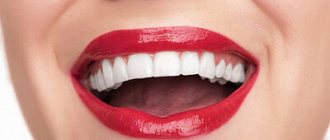- Pediatric orthodontics - correction of malocclusion in children
- Adult orthodontics - bite correction in adults
- Treatment with removable orthodontic appliances
- Correction of malocclusion without braces using mouthguards in adults.
- What orthodontic devices do our orthodontists use to correct the bite?
- How is braces treatment performed?
- What types of braces are there?
- How and why to choose an orthodontist?
- Reminder to the brace bearer
- What is orthognathy?
Everyone who was not given a beautiful smile and correct bite by nature wants to find them and get rid of insecurities, complexes and health problems forever.
But it is generally accepted that orthodontic treatment is long, painful and causes a lot of inconvenience. Today this is a misconception. Modern orthodontic technologies and bracket systems themselves differ significantly from previous ones. With proper preparation for orthodontic treatment and proper behavior of the patient, they provide sufficient comfort for the patient during the process. Read here about what you need for this.
Do teeth with braces hurt a lot and what can you do about it?
Fixing braces is a painless procedure. But after the orthodontic archwire is installed in the braces, pressure will be placed on the teeth. Therefore, for several days after installation and each new arch replacement, the teeth may ache a little.
How much your teeth will hurt depends on the characteristics of your body and its pain threshold. According to statistics, 10% of patients’ teeth do not hurt at all, more than half report minor pain, and only 5% of brace wearers report severe pain.
In any case, the discomfort goes away after a few days, and the orthodontist will advise which painkiller is best to take if the pain greatly ruins your life.
So putting on braces is not painful, but rather a little unpleasant. But for the sake of the beauty of your smile and your own health, you can endure a little.
By type of section: round, rectangular, square
Arcs are also distinguished according to the type of section:
- Round - thin and elastic. They are used at the beginning of correction, as they have the smallest force on the teeth. Such specimens are thermodependent (they change qualities and properties when heated and cooled). While wearing, doctors advise not to eat foods with different temperatures at the same time, for example, cold yogurt and hot coffee.
- Rectangular - characterized by medium rigidity and traction force, so a rectangular arch is used in the middle of treatment.
- Square ones are the toughest. They completely fill the grooves of the braces. Used only at the end of correction.
Photo 1. A rectangular arch on the upper jaw, unlike a round arch, its interaction area is larger, and accordingly the force applied to the tooth increases.
How much do wires for braces cost? The average price of one piece is 600 rubles.
How to get used to the braces system?
Any braces are a foreign body in the oral cavity. And in the first couple of weeks after their installation, the body will be uncomfortable with them. Then addiction will set in, and the braces system will no longer cause inconvenience.
During the habituation period, you may experience:
- increased salivation,
- impaired speech clarity,
- The braces system can rub the mucous membrane.
To reduce these negative effects to a minimum and quickly get used to braces, we recommend:
- Rinse your mouth with astringent solutions - decoctions of oak bark, shepherd's purse, drink tea with viburnum, water with lemon - this will help reduce saliva production.
- Practice pronunciation by speaking tongue twisters or simply reading aloud. This way your speech apparatus will quickly get used to the new working conditions.
- Use orthodontic wax to cover interfering clasps. Your orthodontist will give out the wax immediately after fixation. If the braces are rubbed and inflammation appears on the mucous membrane, use a healing ointment. In this case, Solcoseryl will work well.
- Always have a travel hygiene kit with you so you can brush your teeth immediately after eating.
Instrumental examination
Orthopantomogram is a panoramic photograph of the dentition. It is used to determine the location of the teeth and their rudiments, and to identify supernumerary and impacted teeth.
The examination provides information about the degree of formation of the tooth root, the availability of space for the growth of third molars, and the level of bone tissue.
We suggest you read What to do if your tonsils are inflamed: causes, treatment methods and possible complications - LorTut
Teleroentgenogram is a photograph of the head in a lateral projection. The study helps to calculate the angle of the skull structure, which changes during the treatment process. It is used during the period of growth or in cases of severe skeletal deformation.
Additional Information! Taking into account the examination and radiography data, the necessary braces parameters are selected.
What can you eat with braces?
There are no big prohibitions on certain foods during orthodontic treatment, but it is better to adhere to the following rules:
- In the first days after installation and activation, while your teeth ache, it is better to eat soft and liquid food - porridge, puree soups, smoothies, yoghurts and curds. This will make it easier to get used to your new state.
- There is no need to eat sticky foods that can get stuck in the braces and damage them. And even if they don’t damage them, it’s difficult to clean them out later. Therefore, toffees, caramels, chewing gum, as well as cookies, baked goods, and other foods that become sticky when chewed are prohibited.
- Do not eat hard foods - crackers, nuts, pieces of meat, etc. — they can easily damage your braces. For the same reason, cut raw vegetables and fruits into small pieces.
- Don't forget that products such as tea, coffee, colored drinks, beets, blueberries, etc. may change the color of some types of braces and ligatures on them. And sitting in a cafe with a brace system full of, for example, red beets is not very aesthetically pleasing. So think about it.
- If your brace system has thermo-active orthodontic wires, then you cannot eat ice cream or drink ice water. The fact is that at ordinary temperatures a thermoactive arc can be given any shape. Then, under the influence of a person’s body temperature, it “remembers” the shape that was put into it during production and begins to work. And here you are with your ice cream...
Method 2
The second method uses a paper clip and cheese wax. Follow these steps:
- Remove the wax from the packaging of Babybel cheese.
- Give it a semicircular shape and place it on the dentition.
- After hardening, it is removed and one side is treated with non-toxic glue.
- Let the glue dry.
- Decorate the structure at your own discretion.
- The paper clip is cut into four parts and placed in wax.
Important! All elements from which the devices are supposed to be made must be sterile and non-sharp!
Aliexpress and Jum sell fake braces of various designs - with flowers, Mickey Mouse, and Hello Kitty. They are made of clear plastic and are compatible with autoclave or cold sterilization.
Their minimum cost is $1. You cannot eat, drink or run in such devices. Be careful not to swallow small parts.
How to properly brush teeth with braces?
To care for your teeth while wearing braces, you will need a whole range of products:
- A suitable toothpaste should be recommended by your dentist.
- Special orthodontic toothbrush.
- Mono-tuft toothbrush.
- Interdental brushes of different diameters.
- A special dental floss for caring for braces is superfloss.
- Mouthwash.
- And, preferably, an irrigator.
You need to brush your teeth thoroughly twice a day - morning and evening, consistently using all the products from the list above. With toothbrushes you need to make sweeping movements, first on the lateral sections of the dentition - from the outside and from the inside, and then in the front. Using dental brushes and floss, it is necessary to thoroughly clean the interdental spaces, areas under the arch and next to the braces. At the end of hygiene, you need to rinse your mouth with mouthwash or use an irrigator.
During orthodontic treatment, patients need to carry a special travel dental hygiene kit with them in order to always be able to get their teeth in order with braces. After each meal, remove all food debris from the braces system.
In addition to daily home hygiene, once every 4-6 months, patients with braces need to undergo a professional hygiene procedure in the clinic.
Immediately after fixing the braces system, the orthodontist will teach the patient how to properly care for their teeth during treatment.
Remember, it is not braces that spoil your teeth! It is poorly cleaned plaque that causes demineralization and then caries.
Second visit to the doctor and measures before installation
At the repeated consultation, impressions of the jaw rows are taken and control models of braces are prepared.
They also try them on, tell you about proper care of the structures, and teach you how to properly brush your teeth. The doctor recommends special brushes, pastes, foams and rinses.
The dental clinic performs a professional cleaning before installing the system. If necessary, inflammatory processes of soft tissues are treated, fillings are placed, and foci of infection are sanitized.
If these measures are not followed, bone resorption, pathological mobility or tooth loss may occur.
How to wear orthodontic traction bands - elastics?
Orthodontic rods - elastics - are special latex “rubber bands” that are placed on the hooks of the braces system to tighten the jaws together. They greatly increase the effectiveness of braces treatment. Properly selected and worn elastics do not interfere with speaking. The main rule of wearing pull-ups is regularity.
The time to start wearing elastics, their type and the pattern according to which the rods are put on the brace system is prescribed ONLY by the orthodontist. Wearing elastics on your own can only cause harm. Also, the orthodontist puts orthodontic rods on the patient’s brace system for the first time and teaches him to do it independently. In order not to forget the location of the rods, it is convenient to photograph the diagram and then carefully repeat it - it is not at all difficult.
Planned manipulations
At the beginning of treatment, weak and thin products with a round cross-section are used. Due to their elasticity and plasticity, they seem to prepare the teeth for the upcoming therapy.
During the period of using power elements, the patient may not feel any visible discomfort. Nickel-titanium products are used for these purposes.
Then the models are replaced with elements with a wider cross-section, increasing the load. They allow you to move not only the supragingival part of the teeth, but also the roots. With these products, the active part of bite treatment begins.
At the end of the course, square-section products are used. Thanks to them, it is possible to achieve final alignment of the bite and correct position of the teeth.
Replacing power products during therapy is not used only in some types of systems and for small bite defects.
What to do if the bracket comes off or the arch in the bracket system breaks?
Every brace wearer has at least once encountered the breakdown of elements of the brace system. You need to take this calmly, but you should return everything to its place as quickly as possible. A broken brace system not only does not correct your bite, it can cause serious harm.
So, in case of any force majeure with your braces system, call your orthodontist and make an appointment for the next few days.
What you can do yourself in various cases of brace system failure:
1. If the bracket comes off.
If the lock has only come off a little and has not completely fallen off the tooth, cover it together with the arch with a piece of orthodontic wax.
If the bracket has come off completely and is “hanging” on the arch, try using tweezers to remove the ligature or open the bracket cover to remove the lock from the orthodontic arch. Don’t forget to bring it to the orthodontist later - perhaps he will not change the lock, but will glue the old one in its place.
2. The orthodontic arch has jumped out of the bracket slot.
You can try to bring it back yourself using eyebrow tweezers. It is convenient to close the cover of a self-ligating bracket with a pencil with an elastic band at the end. If it doesn’t work out, it’s okay, but don’t put off visiting the orthodontist, because... in this situation, one tooth “fell out” of the treatment program, and this is bad.
3. When the orthodontic arch leaves the groove of the last bracket, it can injure the buccal mucosa. Try to carefully insert it back. If this does not work, then trim the free piece with nail clippers. Be careful not to swallow what you cut off! Cover the sharp end of the archwire with orthodontic wax or a cotton ball. This way you won't get hurt while getting to the orthodontist.
Method 1
To make it you will need a paper clip or wire, orthodontic wax, foil, sandpaper. The structure is prepared in the following sequence:
- Cut off the required section of the wire or unbend the paper clip.
- They are formed into a “horseshoe”.
- Smooth the ends with sandpaper and wrap with insulating tape.
- Balls are formed from small pieces of foil or beads are taken.
- Attach them to the main element.
- Orthodontic wax is applied to the created structure and pressed against the teeth.
Note! An incorrectly sized wire will damage soft tissue.
Price
Given the reasonable cost of the Damon system itself, which varies from 11 to 20 thousand rubles, treatment in clinics significantly exceeds this amount. Here, not only installation manipulations are taken into account, but also the method of fixing the arc.
If braces with a ligature fixation system were used for correction, then the cost of installing a set of 8 braces will be approximately 85 thousand rubles.
Increasing the number of braces will increase the total amount. For example, when installing 10 brackets, the cost increases by 5–8 thousand rubles.
When using a self-ligating system, the cost is 100–130 thousand rubles.
